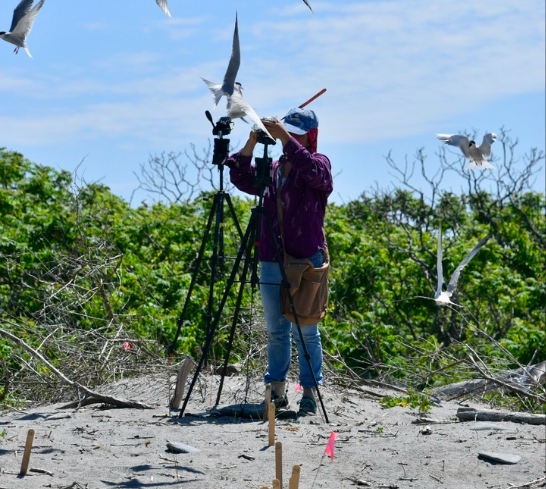Conservation importance of studying seabirds
Dias, M. P., Martin, R., Pearmain, E. J., Burfield, I. J., Small, C., Phillips, R. A., Yates, O., Lascelles, B., Borboroglu, P. G., & Croxall, J. P. (2019). Threats to seabirds: A global assessment. Biological Conservation, 237, 525–537. https://doi.org/10.1016/j.biocon.2019.06.033
Velarde, E., Anderson, D. W., & Ezcurra, E. (2019). Seabird clues to ecosystem health. Science, 365(6449), 116–117. https://doi.org/10.1126/science.aaw9999
Behavior and conservation, conservation and behavior
Anthony, L. L., & Blumstein, D. T. (2000). Integrating behaviour into wildlife conservation: The multiple ways that behaviour can reduce Ne. Biological Conservation, 95(3), 303–315. https://doi.org/10.1016/S0006-3207(00)00037-9
Berger-Tal, O., Polak, T., Oron, A., Lubin, Y., Kotler, B. P., & Saltz, D. (2011). Integrating animal behavior and conservation biology: A conceptual framework. Behavioral Ecology, 22(2), 236–239. https://doi.org/10.1093/beheco/arq224
Caro, T. (1999). The behaviour–conservation interface. Trends in Ecology & Evolution, 14(9), 366–369. https://doi.org/10.1016/S0169-5347(99)01663-8
Common Tern Life History
Birds of the World (subscription available with a UC Davis student account): https://birdsoftheworld.org/bow/species/comter/cur/introduction
Burger J, Gochfeld, M. 1991. The common tern: Its breeding biology and social behavior. New York (NY): Columbia University Press.
Nisbet ICT, Arnold JM., Oswald SA, Pyle P, Patten MA. 2020. Common Tern (Sterna hirundo). In Billerman SM, Keeney BK, Rodewald PG, Schulenberg TS, editors. Birds of the World. Ithaca (NY): Cornell Lab of Ornithology.
Behavioral Methods
Altmann, J. (1974). Observational Study of Behavior: Sampling Methods. Behaviour, 49(3/4), 227–267. http://www.jstor.org/stable/4533591
Behavioral Observation in Laridae
Ellis, J. C., & Good, T. P. (n.d.). NEST ATTRIBUTES, AGGRESSION, AND BREEDING SUCCESS OF GULLS IN SINGLE AND MIXED SPECIES SUBCOLONIES. 9.
Pearson, J., Nisbet, I. C. T., & Ottinger, M. A. (2005). Age-related differences in nest defense in common terns: Relationship to other life-history parameters. AGE, 27(4), 297–305. https://doi.org/10.1007/s11357-005-4554-x
Pierotti, R., & Annett, C. (1994). Patterns of Aggression in Gulls: Asymmetries and Tactics in Different Social Categories. The Condor, 96(3), 590–599. https://doi.org/10.2307/1369461
Annual Schedules and Physiological Mechanisms
Wingfield, J. C., Hegner, R. E., Dufty, A. M., & Ball, G. F. (1990). The “Challenge Hypothesis”: Theoretical Implications for Patterns of Testosterone Secretion, Mating Systems, and Breeding Strategies. The American Naturalist, 136(6), 829–846. https://doi.org/10.1086/285134
Goymann, W., Landys, M. M., & Wingfield, J. C. (2007). Distinguishing seasonal androgen responses from male–male androgen responsiveness—Revisiting the Challenge Hypothesis. Hormones and Behavior, 51(4), 463–476. https://doi.org/10.1016/j.yhbeh.2007.01.007
Landscape of fear (spatial behavior)
Gaynor, K. M., Brown, J. S., Middleton, A. D., Power, M. E., & Brashares, J. S. (2019). Landscapes of Fear: Spatial Patterns of Risk Perception and Response. Trends in Ecology & Evolution, 34(4), 355–368. https://doi.org/10.1016/j.tree.2019.01.004
